EDGE takes you inside the area’s most creative kitchens.
The Office Beer Bar & Grill • Grilled Bratwurst
728 Thompson Ave. • BRIDGEWATER 411 North Ave. West • WESTFIELD 32–34 Chestnut St. • RIDGEWOOD
We fire finish our beer-braised bratwurst on the grill and serve it with sautéed onions and peppers on a char-grilled garlic-infused baguette.
— Kevin Felice, 40North Executive Chef.
 Paragon Tap & Table • Mushroom Tart
Paragon Tap & Table • Mushroom Tart
77 Central Ave. • CLARK
(732) 931-1776 • paragonnj.com
In additional to all of our craft beer and craft dishes, burgers, pastas and seasonal, local menu items, we are also very proud to offer our vegan and vegetarian experiences, including mushroom tart with roasted salsify, zucchini and French beans.
— Eric B. LeVine, Chef/Partner
 A Toute Heure/100 Steps Supper Club & Raw Bar
A Toute Heure/100 Steps Supper Club & Raw Bar
232 Centennial Avenue / 215 Centennial Avenue • CRANFORD
(908) 276-6600 • localrootscranford.com
Our restaurants offer the best ingredients from ocean, farm, and garden on their seasonal menus. As we head into winter, the ocean offers up some of our best seasonal options—from briny local oysters and mussels, to gorgeous local catch. The colder water temperatures mean a great abundance and amazing local flavors!
— Andrea & Jim Carbine, Owners
 The Black Horse Tavern & Pub • Summer Smoked Pork Chop
The Black Horse Tavern & Pub • Summer Smoked Pork Chop
1 West Main Street • MENDHAM
(973) 543–7300 • blackhorsenj.com
A succulent house-smoked chop served with micro spring herbs and Jersey blueberry gastrique.
— Kevin Felice, 40North Executive Chef
 Piattino Neighborhood Bistro • Amalfi Seafood Pasta
Piattino Neighborhood Bistro • Amalfi Seafood Pasta
88 East Main Street • MENDHAM
(973) 543-0025 • piattinonj.com
Sautéed shrimp and clams, tomato, roasted garlic, spinach and white wine lobster broth over linguine.
— Kevin Felice, 40North Executive Chef
 The Office Beer Bar & Grill • Jersey “ Wake Up” Call
The Office Beer Bar & Grill • Jersey “ Wake Up” Call
619 Bloomfield Ave. • MONTCLAIR
(973) 783-2929 • office-beerbar.com/locations/montclair
Sirloin Burger topped with pork roll, American cheese and a fried egg. Lettuce, tomato and onion!
— Kevin Felice, 40North Executive Chef
 George and Martha’s American Grille • Sliced Hanger Steak
George and Martha’s American Grille • Sliced Hanger Steak
67 Morris Street • MORRISTOWN
(973) 267-4700 • georgeandmarthas.com
Served atop a sweet potato purée, with a wild mushroom demi-glaze and pan-roasted asparagus.
— Kevin Felice, 40North Executive Chef
 The Office Tavern Grill • Slow Roasted Chicken Tacos
The Office Tavern Grill • Slow Roasted Chicken Tacos
3 South Street • MORRISTOWN
(973) 285-0220 • officetaverngrill.com
Grilled flour tortilla, achiote spice, guacamole, queso fresco, cilantro and lime.
 Arirang Hibachi Steakhouse • Pan Seared Scallops
Arirang Hibachi Steakhouse • Pan Seared Scallops
1230 Route 22 West • MOUNTAINSIDE
(908) 518-9733 • partyonthegrill.com
Most guests think to visit us for an unforgettable hibachi meal, but we offer amazing traditional Japanese style dishes such as the pan seared scallops, served with a edamame purée, truffle scented greens, miso lime dressing and bok choy. We also offer the freshest sushi in the area.
 Daimatsu • Grilled Oyster
Daimatsu • Grilled Oyster
860 Mountain Ave. • MOUNTAINSIDE
(908) 233-7888 • daimatsusushibar.com
Fresh jumbo Pacific oyster grilled with homemade miso sauce, fried northern puffer fish marinated in light ginger soy coated in potato starch and deep fried crunchy veggie on the side.
— Momo, Chef
 Publick House • Shepherd’s Pie
Publick House • Shepherd’s Pie
899 Mountain Ave. • MOUNTAINSIDE
(908) 233-2355 • publickhousenj.com
Our Shepherd’s Pie is an authentic homage to our Irish roots. The slow braised lamb is so tender it practically melts in your mouth. The meat is mixed with fresh herbs and vegetables, creating a stew of rich, warm flavors. Topped with garlic potato puree and browned until crispy, it pairs beautifully with a pint of craft beer.
— Danilo Ayala, Executive Chef
 Luciano’s Ristorante & Lounge • House Made Mafalda Pasta Inverno Style
Luciano’s Ristorante & Lounge • House Made Mafalda Pasta Inverno Style
1579 Main Street • RAHWAY
(732) 815-1200 • lucianosristorante.com
Our goal is to give our guests a pleasurable dining experience, with fresh ingredients and personable service in a beautiful Tuscan décor complete with fireplaces. Our house-made Mafalda pasta features slow-braised artichoke crowns, cippolini onions and oven-dried tomatoes in a saffron cream broth. Luciano’s is available for dining and private parties of all types.
— Joseph Mastrella, Executive Chef/Partner
 Morris Tap & Grill • Grilled Brined Pork Chop
Morris Tap & Grill • Grilled Brined Pork Chop
500 Route 10 West • RANDOLPH
(973) 891-1776 • morristapandgrill.com
With the turn of the season we always change and add to our menu. We use local product to support area farmers and create seasonally to keep the menu at the peak of freshness. Grilled brined pork chop with roasted acorn squash and BBQ-dusted potato tots, maple garlic glaze.
— Eric B LeVine, Chef/Partner
 Spirit: Social Eatery and Bar • Jersey Breakfast Bar Pie
Spirit: Social Eatery and Bar • Jersey Breakfast Bar Pie
250 Morris Ave. • SPRINGFIELD
(973) 258-1600 • mclynns.com
Get in the Spirit! Our Jersey Breakfast Bar Pie features potatoes, Taylor ham, cheddar cheese and onions. It doesn’t get more Jersey than that!
— Mark Houlker, Chef

Thai Amarin • Goong Ma Kham
201 Morris Ave. • SPRINGFIELD
(973) 376-6300, (973) 376-6301 • thaiamarinnj.net
Batter fried jumbo shrimps with a tasty house made tamarind sauce, topped with roasted almonds and served on a bed of stir-fried spinach.
— Amy Thana, Owner
 Café Z
Café Z
2333 Morris Avenue • UNION
(908) 686-4321 • CafeZNJ.com
Try our fresh mozzarella and roasted red pepper appetizer, perfect with a bottle of Coppola red wine. Every Friday night is live entertainment and dancing!
— Patricia Inghilleri, Owner
 Chestnut Chateau • Black Seabass
Chestnut Chateau • Black Seabass
649 Chestnut Street • UNION
(908) 964-8696 • chestnutchateaunj.com
As the cold weather is in full swing, everyone bundles up and likes to stay warm. I embrace the cold and use the best fish caught in the deep blue waters of our east coast. Black seabass is great whole or filleted. The flaky white meat is served with a browned butter sauce that’s garnished with capers, baby croutons, parsley and lemon supremes.
— George Niotis, Chef
 Mario’s Tutto Bene • Vinegar Pork Chops
Mario’s Tutto Bene • Vinegar Pork Chops
495 Chestnut Street • UNION
(908) 687-3250 • mariostuttobene.com
Our vinegar pork chops feature three thin-cut Frenched chops that are coated with Italian breadcrumbs and sautéed with sweet vinegar peppers, prosciutto and garlic. They arrive with house-made roasted or mashed potatoes. Our regulars love this entrée.
 Rio Rodizio • Brazilian Meats
Rio Rodizio • Brazilian Meats
2185 Rte. 22 West • UNION
(908) 206-0060 • riorodiziounion.com
We offer an “All-You-Can-Eat” dining experience transported straight from the streets of Rio de Janeiro to your tableside. Each customer gets to witness a never-ending parade of freshly roasted meat and poultry. Our authentic Gaucho chefs carve these melt-in-your-mouth meats to your liking.
 The Manor • Petite Filet Mignon & Short Ribs
The Manor • Petite Filet Mignon & Short Ribs
111 Prospect Avenue • WEST ORANGE
(973) 731-2360 • themanorrestaurant.com
Our hearty petite filet mignon, accompanied by oh-so-rich short ribs that have been braised to tender perfection are ideal for the season. Add to that grilled baby leeks, forage mushrooms scented in bordelaise sauce, caramelized cipollini onions, and a delightfully-presented potato purée in a crisp potato basket and you have a taste of autumn well worth the visit.
— Vincent Raith, Executive Chef
 PICTURE THIS
PICTURE THIS SWEET TALK
SWEET TALK X’S & O’S
X’S & O’S
 PILLOW TALK
PILLOW TALK IN THE KEY OF ME
IN THE KEY OF ME SUPER BOWL
SUPER BOWL FLYAWAY HOME
FLYAWAY HOME SCRATCHIN’
SCRATCHIN’ GOING COACH
GOING COACH OUR TOWN
OUR TOWN

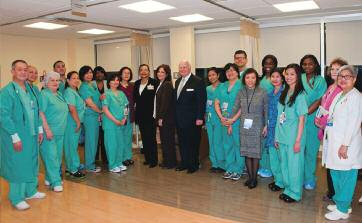 OPEN FOR BUSINESS
OPEN FOR BUSINESS
 STOUTHEARTED MEN
STOUTHEARTED MEN THE RIGHT PRESCRIPTION
THE RIGHT PRESCRIPTION TOUCHDOWN!
TOUCHDOWN! REFRESHER COURSE
REFRESHER COURSE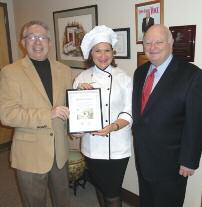 HAIL TO THE CHEF!
HAIL TO THE CHEF! PASSING OF A “DYNAMO”
PASSING OF A “DYNAMO”





 Happy Days
Happy Days Patient, Heal Thyself
Patient, Heal Thyself Crisp Reminder
Crisp Reminder
 Where There’s Smoke…
Where There’s Smoke… The Wrong Kind of Tweeting
The Wrong Kind of Tweeting
 Going Deep
Going Deep



 Editors Note: Chris Gibbs pulled this assignment because she has a long history with carpal tunnel syndrome. In other words, it’s personal. Is the computer, she asked, the culprit in the rise in cases? Dr. Mackessy says the jury is still out on that connection. The same goes for texting and thumb issues. Instead he is convinced that almost everyone will suffer from some degree of rotator cuff or carpal or other hand damage once they reach a certain age—through the normal wear and tear of everyday life.
Editors Note: Chris Gibbs pulled this assignment because she has a long history with carpal tunnel syndrome. In other words, it’s personal. Is the computer, she asked, the culprit in the rise in cases? Dr. Mackessy says the jury is still out on that connection. The same goes for texting and thumb issues. Instead he is convinced that almost everyone will suffer from some degree of rotator cuff or carpal or other hand damage once they reach a certain age—through the normal wear and tear of everyday life.




 Nicky Hilton
Nicky Hilton Victoria Beckham and Khloe & Kim Kardashian Hermes Birkin Bag
Victoria Beckham and Khloe & Kim Kardashian Hermes Birkin Bag HRH Kate Middleton
HRH Kate Middleton Miley Cyrus
Miley Cyrus THE CAT’S IN THE BAG
THE CAT’S IN THE BAG Making History
Making History

 lead instructor Andy Beutel. “This is their summer vacation. They are choosing to do this and are enjoying themselves when writing. I don’t think schools give children the opportunity to do that very often, so Write On Sports definitely gives kids that chance to have fun while learning.”
lead instructor Andy Beutel. “This is their summer vacation. They are choosing to do this and are enjoying themselves when writing. I don’t think schools give children the opportunity to do that very often, so Write On Sports definitely gives kids that chance to have fun while learning.”
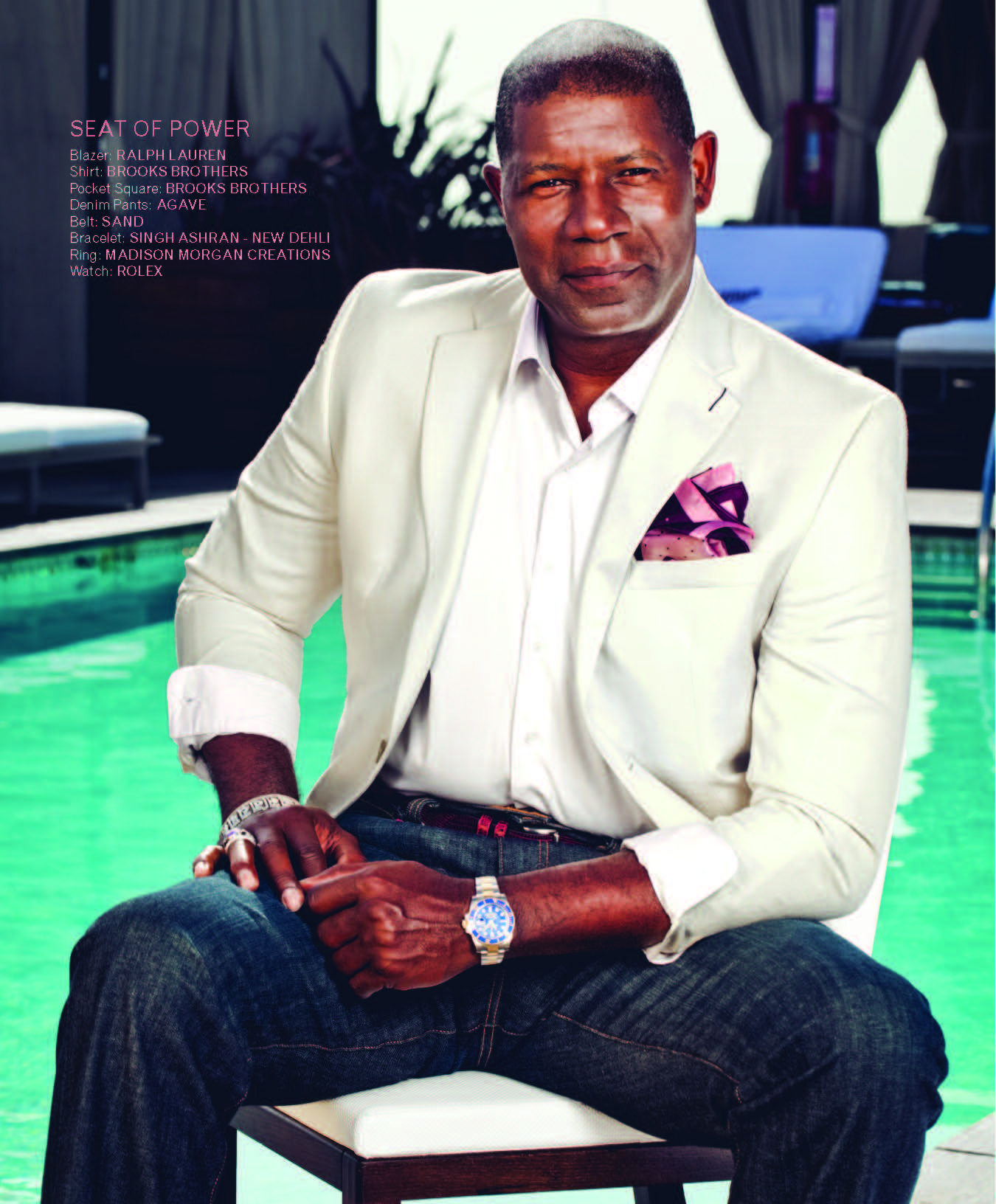




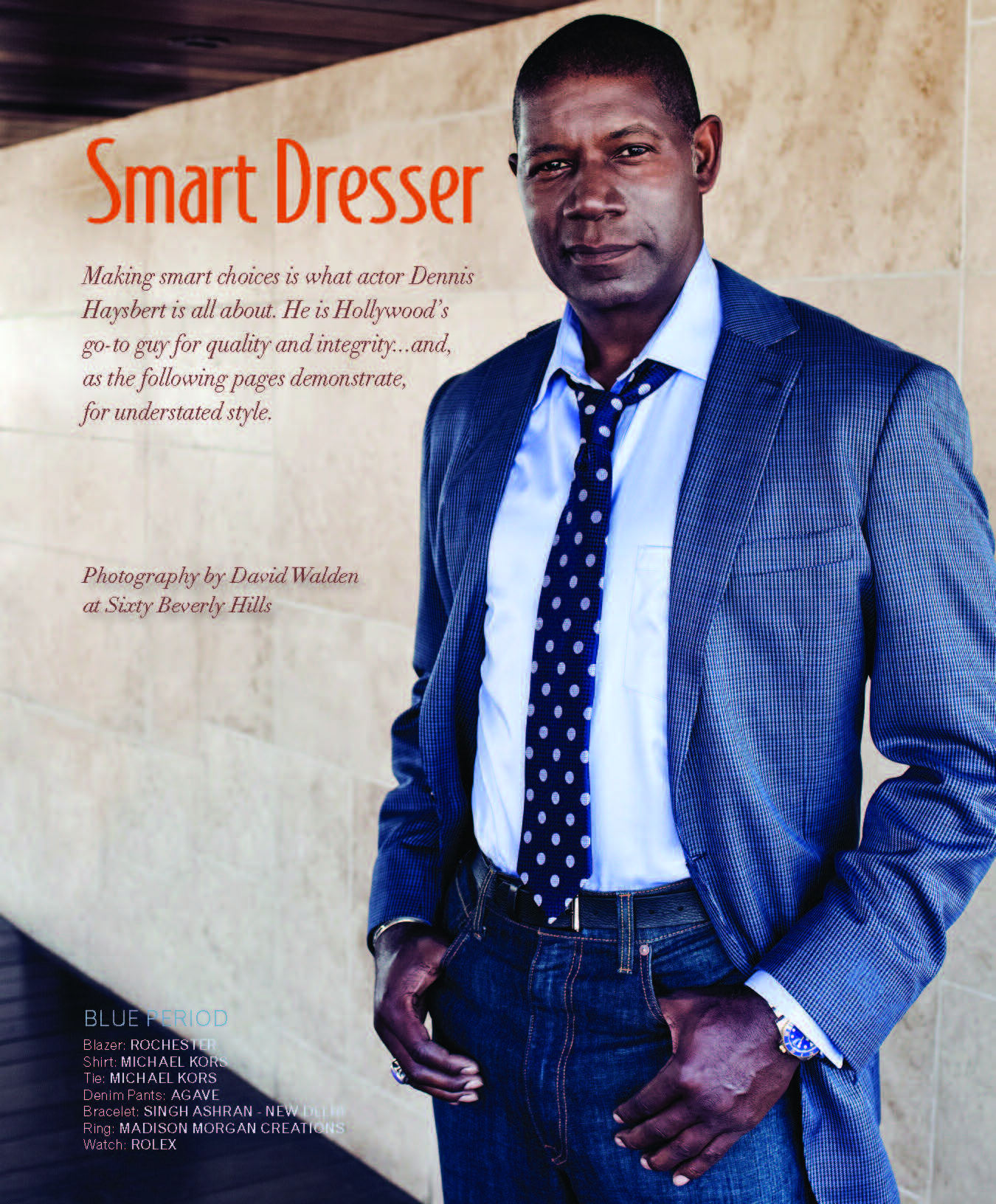
 In the Blink of an Eye
In the Blink of an Eye Eating Away the Blues
Eating Away the Blues 16 Going on 17
16 Going on 17
 Nuts to You
Nuts to You
 Vacation Souvenir
Vacation Souvenir
 Autism Breakthrough at Yale
Autism Breakthrough at Yale


 “The visualization [using robotic equipment] is far beyond anything we’ve had previously,” Dr. Zimmern says. “With robotics, we can perform surgeries that used to be impossible even via laparoscopy. We recently treated a patient who came to us with an abdominal tumor that took up his entire pelvis. The patient was also suffering from obesity, which made his case especially complicated. Even with laparoscopy, we wouldn’t have been able to remove the cancer without giving the patient a permanent colostomy. But the precision of our robotic equipment allowed us to do just that. So we’re learning there are particular instances and cases where the ability to carry out robotics-assisted surgery isn’t just advantageous—it’s really the ideal.”
“The visualization [using robotic equipment] is far beyond anything we’ve had previously,” Dr. Zimmern says. “With robotics, we can perform surgeries that used to be impossible even via laparoscopy. We recently treated a patient who came to us with an abdominal tumor that took up his entire pelvis. The patient was also suffering from obesity, which made his case especially complicated. Even with laparoscopy, we wouldn’t have been able to remove the cancer without giving the patient a permanent colostomy. But the precision of our robotic equipment allowed us to do just that. So we’re learning there are particular instances and cases where the ability to carry out robotics-assisted surgery isn’t just advantageous—it’s really the ideal.”

 In the secular world, we don’t think much about the retirement needs of Catholic priests, sisters and brothers. Yet, as exceptional and unwavering as they are in their devotion to others, they are just as susceptible to the challenges of aging as we are. Perhaps more so, in fact.
In the secular world, we don’t think much about the retirement needs of Catholic priests, sisters and brothers. Yet, as exceptional and unwavering as they are in their devotion to others, they are just as susceptible to the challenges of aging as we are. Perhaps more so, in fact. ests, we do support Franciscans, Dominicans, Benedictines, etc. However, it’s primarily sisters who are most in need of our help.”
ests, we do support Franciscans, Dominicans, Benedictines, etc. However, it’s primarily sisters who are most in need of our help.”




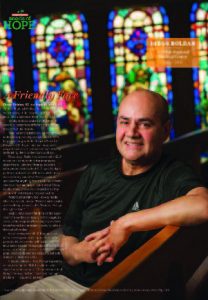 HEAVEN SENT
HEAVEN SENT PROGRESS IN THE WORKS
PROGRESS IN THE WORKS POWERHOUSE SURGEON
POWERHOUSE SURGEON FORMULA FOR SUCCESS
FORMULA FOR SUCCESS
 WOMAN OF INFLUENCE
WOMAN OF INFLUENCE THE DOCTORS ARE IN
THE DOCTORS ARE IN AIN’T IT GRAND!
AIN’T IT GRAND! Paragon Tap & Table • Mushroom Tart
Paragon Tap & Table • Mushroom Tart A Toute Heure/100 Steps Supper Club & Raw Bar
A Toute Heure/100 Steps Supper Club & Raw Bar The Black Horse Tavern & Pub • Summer Smoked Pork Chop
The Black Horse Tavern & Pub • Summer Smoked Pork Chop Piattino Neighborhood Bistro • Amalfi Seafood Pasta
Piattino Neighborhood Bistro • Amalfi Seafood Pasta The Office Beer Bar & Grill • Jersey “ Wake Up” Call
The Office Beer Bar & Grill • Jersey “ Wake Up” Call George and Martha’s American Grille • Sliced Hanger Steak
George and Martha’s American Grille • Sliced Hanger Steak The Office Tavern Grill • Slow Roasted Chicken Tacos
The Office Tavern Grill • Slow Roasted Chicken Tacos Arirang Hibachi Steakhouse • Pan Seared Scallops
Arirang Hibachi Steakhouse • Pan Seared Scallops Daimatsu • Grilled Oyster
Daimatsu • Grilled Oyster Publick House • Shepherd’s Pie
Publick House • Shepherd’s Pie Luciano’s Ristorante & Lounge • House Made Mafalda Pasta Inverno Style
Luciano’s Ristorante & Lounge • House Made Mafalda Pasta Inverno Style Morris Tap & Grill • Grilled Brined Pork Chop
Morris Tap & Grill • Grilled Brined Pork Chop Spirit: Social Eatery and Bar • Jersey Breakfast Bar Pie
Spirit: Social Eatery and Bar • Jersey Breakfast Bar Pie
 Café Z
Café Z Chestnut Chateau • Black Seabass
Chestnut Chateau • Black Seabass Mario’s Tutto Bene • Vinegar Pork Chops
Mario’s Tutto Bene • Vinegar Pork Chops Rio Rodizio • Brazilian Meats
Rio Rodizio • Brazilian Meats The Manor • Petite Filet Mignon & Short Ribs
The Manor • Petite Filet Mignon & Short Ribs

 Bob Sickles explains that the local products excel over the mass-produced sauces. “While a larger production will process all the tomatoes, whether they are ripe or still green, and get a good sauce which has a higher acid flavor, the producers of the local sauces use hand-picked tomatoes and make sure they all are ripe. This creates a sweeter sauce, which is more work intensive and therefore has to be a bit more expensive. But it’s worth it.”
Bob Sickles explains that the local products excel over the mass-produced sauces. “While a larger production will process all the tomatoes, whether they are ripe or still green, and get a good sauce which has a higher acid flavor, the producers of the local sauces use hand-picked tomatoes and make sure they all are ripe. This creates a sweeter sauce, which is more work intensive and therefore has to be a bit more expensive. But it’s worth it.” Not going on Bob’s word alone, we conducted a non-scientific tomato sauce taste test engaging four individuals with limited “foodie” credentials. In the mix were four New Jersey tomato sauces with slightly differing prices that can be purchased around the state—Nanina’s (25 cents per ounce) from Belleville, Manno’s (30 cents per ounce) from Bradley Beach, Jersey Italian Gravy (40 cents per ounce) from Ridgewood and Jar Goods (50 cents per ounce) from Hoboken—as well a bottle of Cabernet Sauvignon and a loaf of fresh ciabatta bread for dipping into the sauces.
Not going on Bob’s word alone, we conducted a non-scientific tomato sauce taste test engaging four individuals with limited “foodie” credentials. In the mix were four New Jersey tomato sauces with slightly differing prices that can be purchased around the state—Nanina’s (25 cents per ounce) from Belleville, Manno’s (30 cents per ounce) from Bradley Beach, Jersey Italian Gravy (40 cents per ounce) from Ridgewood and Jar Goods (50 cents per ounce) from Hoboken—as well a bottle of Cabernet Sauvignon and a loaf of fresh ciabatta bread for dipping into the sauces. According to our tasting panel, all the sauces were winners, yet different. The least expensive, Nanina’s, provides a very good, all-purpose kitchen staple. One taster’s favorite, Manno’s marinara, was particularly gutsy with herb and garlic flavors punching out on our palates. This sauce would be good with seafood. Delicious Jersey Gravy was thicker and sweet. And the rich, full-bodied Jar Goods was the densest sauce, almost like a paste, offering a fruity, sweet flavor.
According to our tasting panel, all the sauces were winners, yet different. The least expensive, Nanina’s, provides a very good, all-purpose kitchen staple. One taster’s favorite, Manno’s marinara, was particularly gutsy with herb and garlic flavors punching out on our palates. This sauce would be good with seafood. Delicious Jersey Gravy was thicker and sweet. And the rich, full-bodied Jar Goods was the densest sauce, almost like a paste, offering a fruity, sweet flavor.




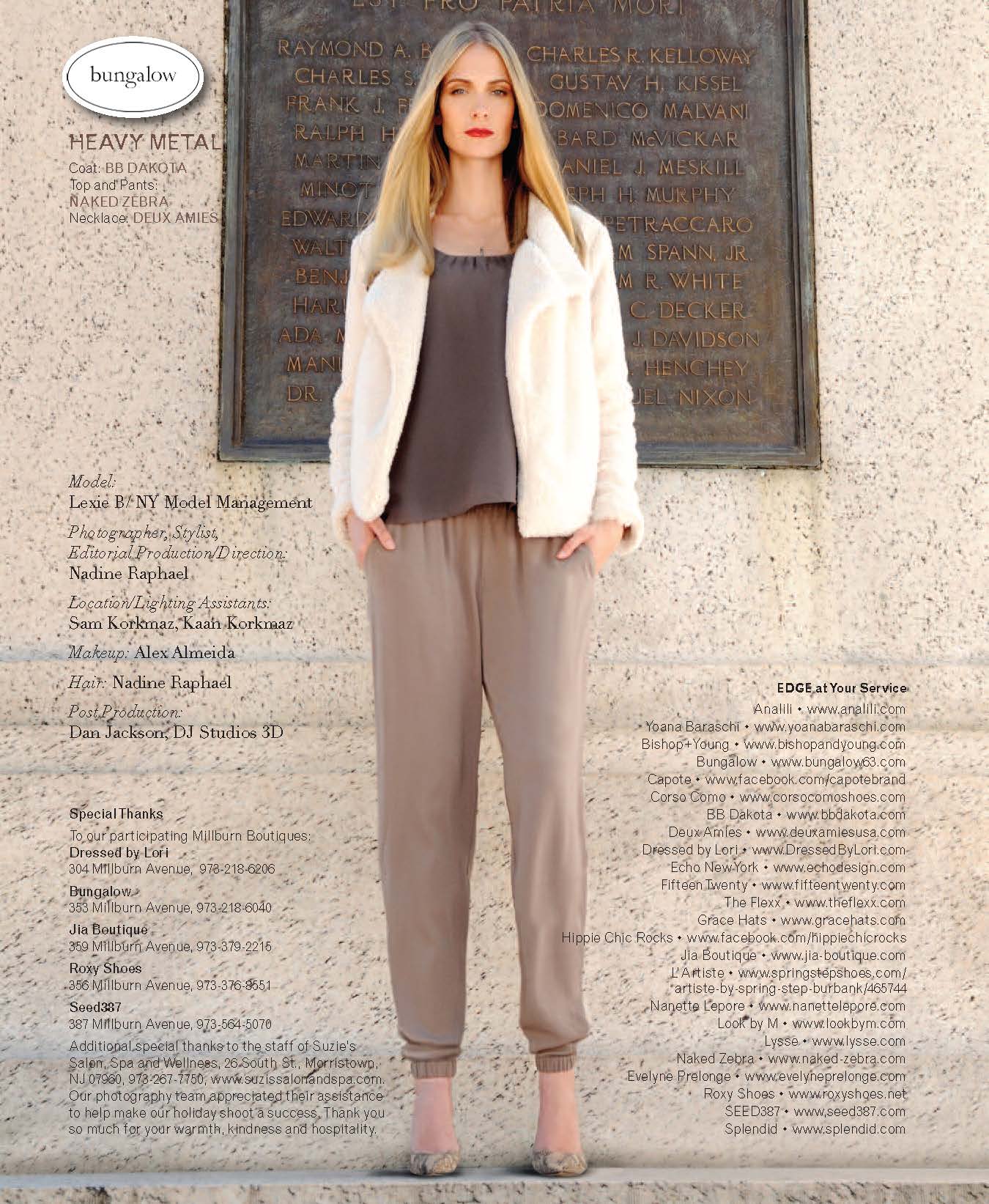



 Do you have a hot topic for Dr. D’Angelo and his Trinitas ER team?
Do you have a hot topic for Dr. D’Angelo and his Trinitas ER team?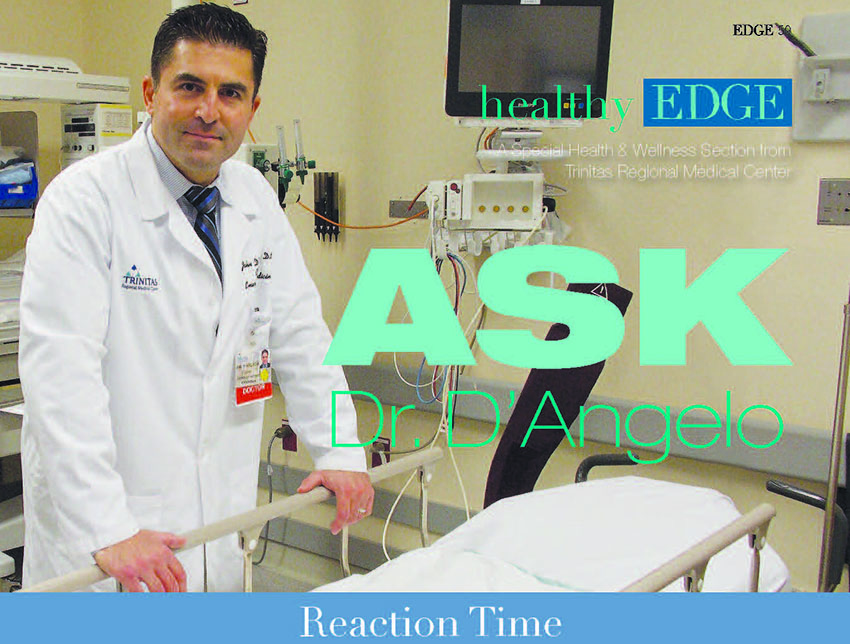
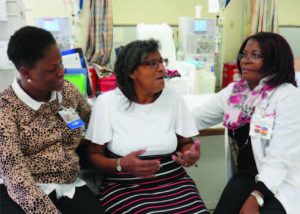
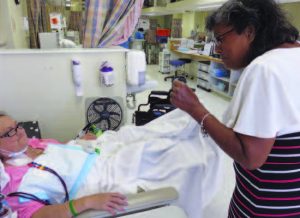 Angela reminds her fellow patients to never stop asking questions or learning about their own treatments. She encourages them to pay attention to their bodies and listen for cues, reminding them that nurses and doctors can only do so much; it’s up to the patients to communicate how they’re feeling and responding.
Angela reminds her fellow patients to never stop asking questions or learning about their own treatments. She encourages them to pay attention to their bodies and listen for cues, reminding them that nurses and doctors can only do so much; it’s up to the patients to communicate how they’re feeling and responding. 

 If you’ve just been diagnosed, or if you’ve been living with diabetes, quality medical care, encouragement and education can make a difference in your daily life.
If you’ve just been diagnosed, or if you’ve been living with diabetes, quality medical care, encouragement and education can make a difference in your daily life.

